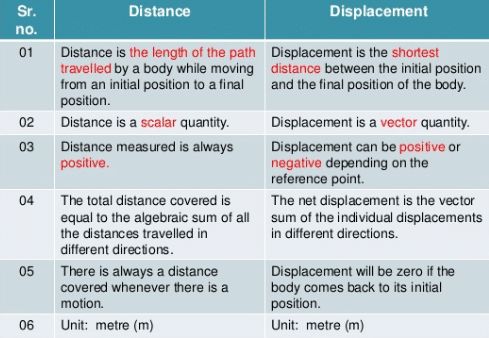- Books Name
- Science Made Easy Science Book
- Publication
- Science Made Easy
- Course
- CBSE Class 9
- Subject
- Science
Distance and Displacement
Distance -The actual path or length travelled by the object travelled by the object is called the distance.
It is a scalar quantity.
It is always positive.
It can never be zero or negative.
Displacement – It is the shortest path between initial and final point.
It is a vector quantity.
It can be positive or negative.
It can be zero.
Difference bw distance and displacement

Example 1: A body travels in a semicircular path of radius 10 m starting its motion from point ‘A’ to point ‘B’. Calculate the distance and displacement.
Example 2: A body travels 4 km towards North then he turn to his right and travels another 4 km before coming to rest. Calculate (i) total distance travelled, (ii) total displacement.
Velocity - It is defined as the displacement of the body per unit time.
Velocity = displacement travelled / time taken
SI unit = m/s (meter/second)
Average Velocity - The average velocity of a body is the total displacement travelled by the total time taken to cover this distance.
Average velocity= Total Displacement/Total Time taken
Avg. Velocity (vavg) = (Initial velocity + Final velocity)/2 = (u+v)/2
where, u = initial velocity, v = final velocity
Example 1: During first half of a journey by a body it travel with a speed of 40 km/hr and in the next half it travels with a speed of 20 km/hr. Calculate the average speed of the whole journey.
Example 2 : If Ananya was able to travel 6 km in North in 2 hour in his car. What was her velocity?
Example 3: A car travels 20 km in first hour, 40 km in second hour and 30 km in third hour. Calculate the average speed of the train.

 Science Made Easy
Science Made Easy
